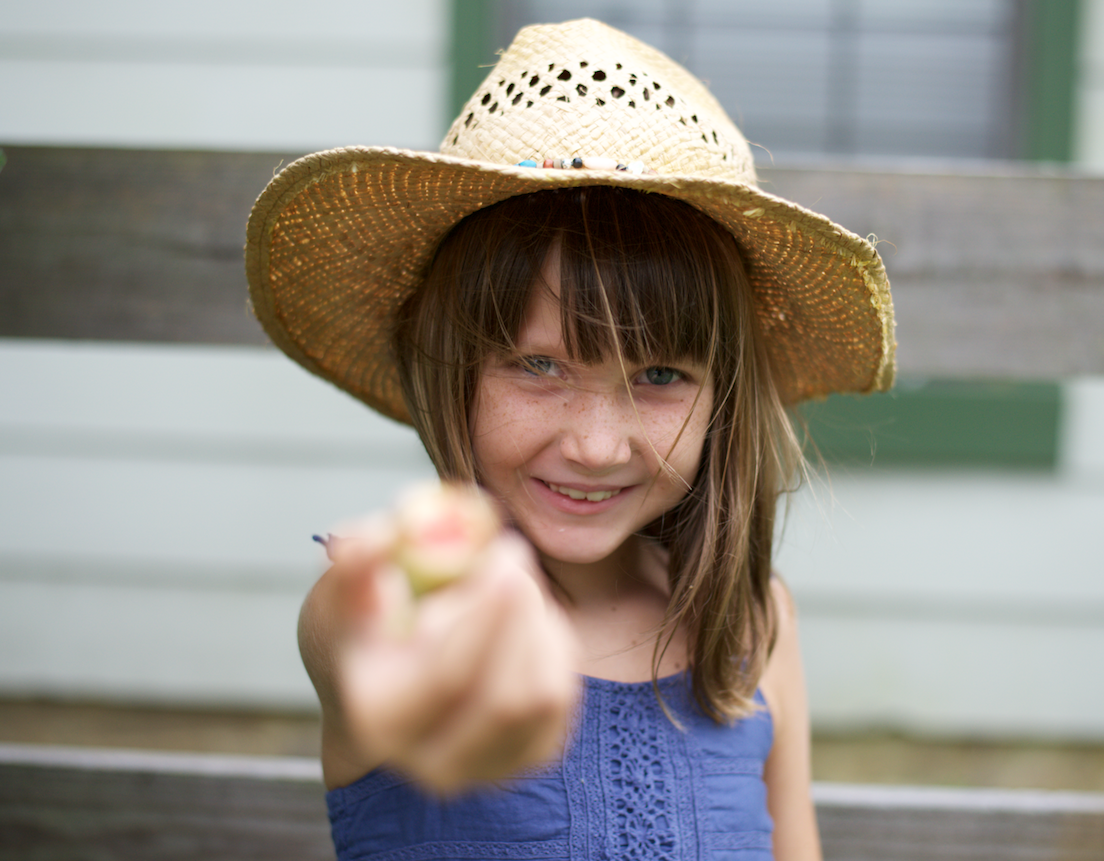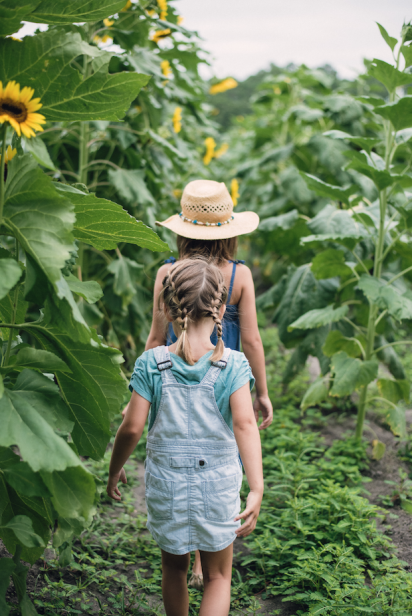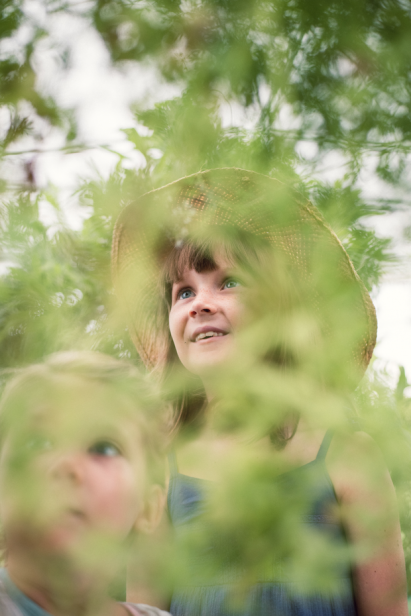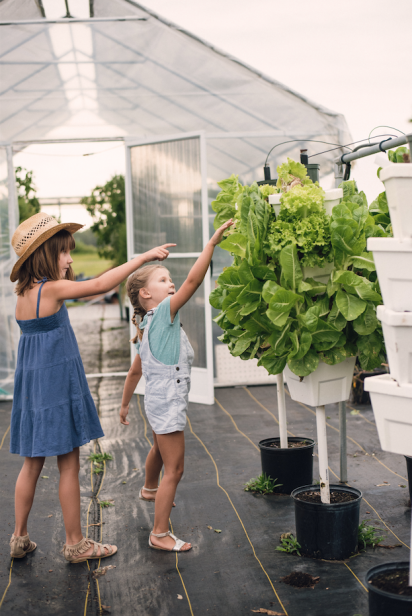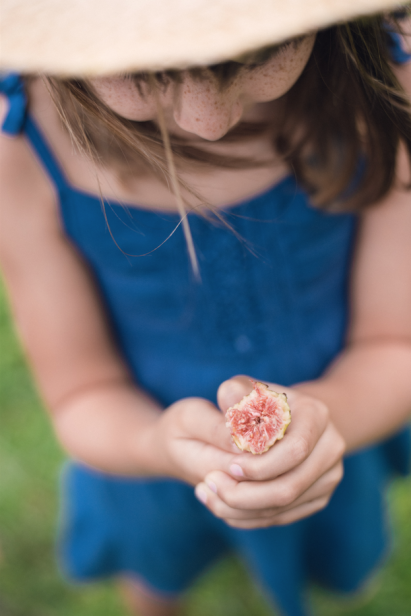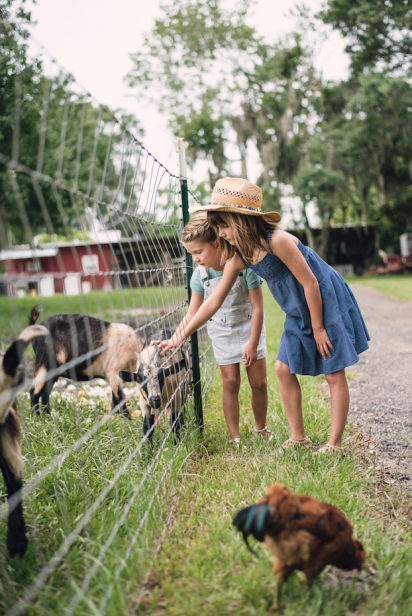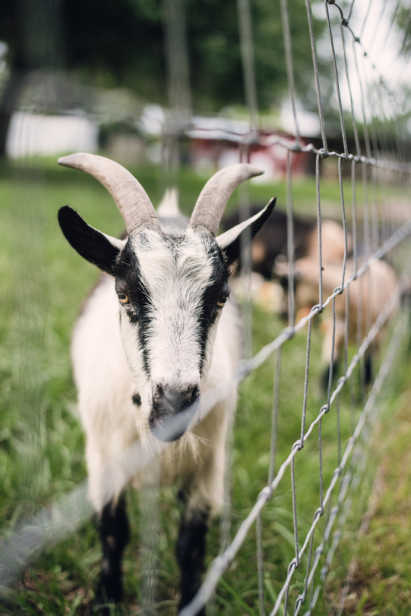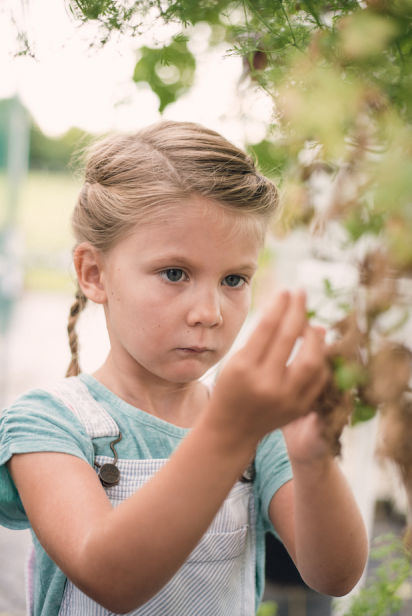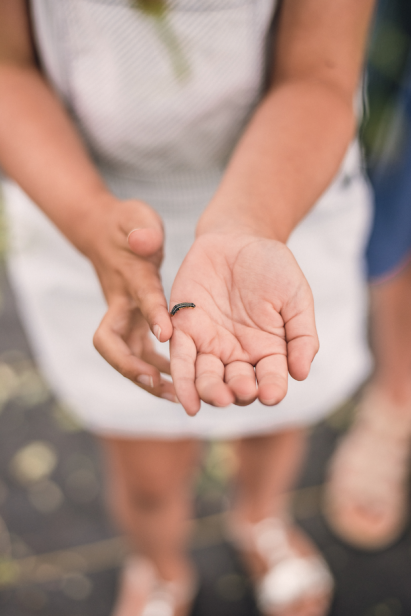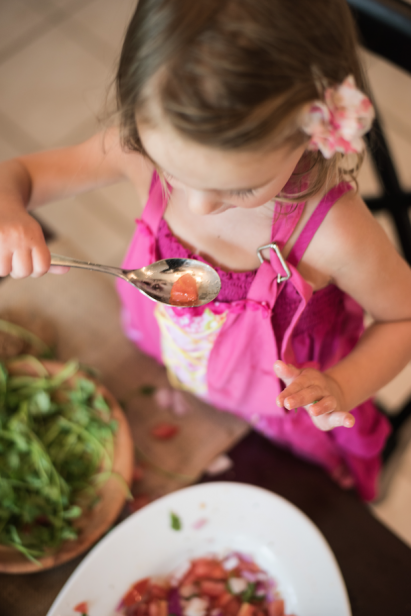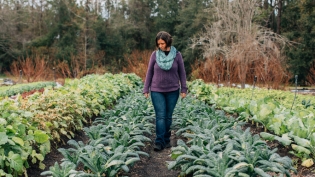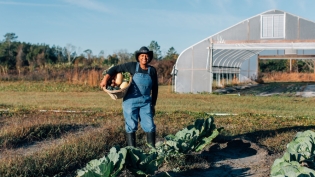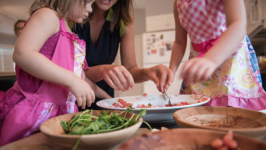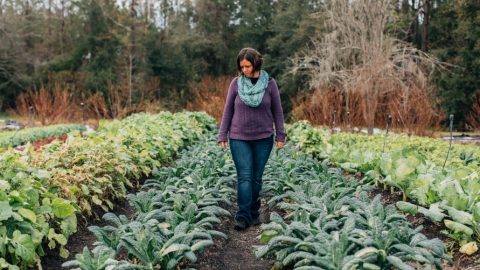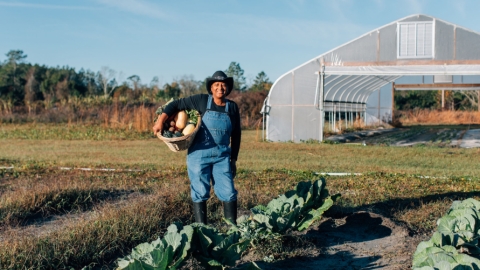Teaching Kids to Love Real Food
It’s somehow a quiet place despite the fact that these 22 acres are bustling with growth and life. From the pleasant chirping of the birds, to sighs from the farm animals, to the gentle breeze through the vegetable garden and citrus trees, the only reminders of the complications of life come from the passing of cars in the distance.
It is here where I can clearly hear the giggles of my girls Karly, 5, and Ellie, 2 as the pigs and goats approach them, and it is this same quiet surround that elicits a new curiosity from within them. The first of the questions—“What’s that unusual-looking plant growing in the garden?” and “What’s the purpose of those sweet-smelling herbs?”—began shortly after Ripp Smith, partner of Rype & Readi Farm Market in Elkton, introduced himself. Clad in Army fatigue pants, a T-shirt, boots, a canvas hat and, of course, keys to the tractor, you’d never guess his day job was actually that of an interventional radiologist at Flagler Hospital.
“This is my passion,” Smith said, as he looked out over the farm. “I like being around farms and being close to the earth.”
We meandered the farm starting with the demonstration garden, in which green beans, gladiolas, onions, radishes and watermelons were being grown, then headed to the hydroponic herb garden, teeming with the scents of mint, basil and cilantro. We also took a peek in the shiitake mushroom tent and headed back over to meet Paprika, a hen whose blue eggs are somewhat reminiscent of the color of a Tiffany’s box. These caught Karly’s eye, and when talk of taking the eggs away arose, she was quick to interject.
“Why do we take the eggs away?” she protested. I replied that this is how we get eggs for our meals. Smith quickly added that if she wanted them to hatch, she’d have to sit on them. With a chuckle, we went into the refurbished barn, now home to a market of locally grown fruits and vegetables. “You can accomplish a lot for health by eating from the earth locally,” Smith said.
As we examined the collection of local produce, Smith pulled a purple potato from one of the bins. “Have you ever seen a purple potato?” he asked Karly. She looked perplexed, so he split the potato in two. She examined it as though it were an amethyst geode and carefully carried it with her as we walked by the watermelons, peaches, peppers and even the low-carb potatoes. It was a journey of sorts for my daughter—one that would certainly initiate a conversation around the dinner table, where she would recognize and connect these very same fruits and vegetables to their humble beginnings.
THE ROOT OF IT
Armed with modern conveniences when it comes to food, from access to recipes on our phones to the supply of global goods found in our supermarkets, it almost seems rudimentary to venture out to a farm. A desire for health and wellness, however, is bringing us back to the roots of our food.
According to The Centers for Disease Control and Prevention, childhood obesity is rising at alarming rates. In fact, the last 30 years have seen obesity numbers double in children and quadruple in adolescents. Furthermore, children’s academic achievement has also been linked to healthy eating—a fact that should be enough to give parents pause when planning meals.
Lin Brightman, board-certified health coach at St. Augustine Integrated Health, points to the education of both parents and children as a key factor in changing the tide. As a mother of five children, she understands the day-to-day battle of “what’s for dinner?”
So what does she think families need to know? First, she advises becoming familiar with the “dirty dozen.” This list of fruits and vegetables are said to carry the largest amounts of pesticides, and many health professionals advise opting for organic and/or locally grown versions. She also suggests choosing whole fruit instead of sugar-laden alternatives. In short, it’s about eating simply.
“Eat small portions, lots of vegetables and whole grains,” Brightman said.
But how do we get our young eaters to welcome fruits and vegetables on their plates?
FROM THE GROUND UP
Sarah Tarantino, a Rype & Readi Farm Market regular, finds visiting the farm is a catalyst for encouraging her children to eat more healthy foods. “It definitely helps kids be more open to and eat more fruits and vegetables when they pick them out themselves,” she said. “Plus, the kids love the animals— that’s what got my son here today.”
Melissa Riccobono agrees and appreciates the experience it gives her children. Her daughter’s elementary school class recently hatched chickens in their classroom, and those newly hatched chickens will now live at Rype & Readi. “She will love that,” she said speaking of her daughter.
Since opening, the farm has also been visited by several classes from The Florida School for the Deaf and Blind. “By smelling the herbs and picking the fruit, they make their own connections,” said Jean-Sebastien Gros, co-partner of Rype & Readi.
In addition to day trips, fractional shares for schools offer further involvement. Teachers get packets of seeds—such as lettuce—to germinate in the classroom. Once the seeds sprout, they return the plants to the farm to grow in a hydroponic area, until a crop of edible food is ready to harvest.
“It gets the children engaged in agriculture,” Gros said. “They continue to grow the lettuce on the farm and make a meal from it, getting them excited about eating healthy.”
The Florida Agricultural Museum in Palm Coast also welcomes numerous school groups throughout the year. Additionally, they are open to the public, so families can experience a farm-type setting with historical significance. “We bring historical structures together to illustrate Florida’s agricultural history,” said Andrew Morrow, director of the museum.
This hands-on experience allows children to shuck corn, pump water, gather eggs and interact with animals. “From goats, to ducks, to chickens, to horses, you can engage with all these different animals that were part of this agricultural community,” said Morrow.
And while visits to farms, gardens and farmers’ markets are essential first stops along the road to healthy eating, a true understanding is clearly achieved by children with none other than their own two hands.
“Unfortunately children today have become separated from where their food comes from,” says Devon Ritch, chair of the board of directors at Beaches Local Food Network. “Kids come plant plants and they eat vegetables when they take ownership of it.” From farmers’ markets to community gardens to workshops, her organization works to educate children (and families) with activities like planting, harvesting and making tea from the garden herbs. “This experience makes them more aware of their diet and gives them a stronger sense of connectedness with the world around them,” she said.
Adam Burke, founder of Veterans Farm in Jacksonville, agrees. His organization, founded to help veterans establish skills that connect them to an industry in need of farmers, opens their farm for school trips and U-pick family visits during blueberry season, when “kids come out and gobble up blueberries like they are cookies.”
AT HOME, AROUND THE DINNER TABLE
Taking this hands-on approach at home is yet another important component in engaging children with their food. Kelly Johnson, former teacher and author of Wings, Worms and Wonder, helps families and children do just that.
Having grown up with memories of harvesting food together with her grandparents, Johnson saw a need to educate children about their food at an early age. “Many kids have no idea where the things in their lunch boxes come from except Publix,” she said. So, she works to help families create edible gardens at home, and the hardest part, she says, is integrating it fully into their lives. “Building it and planning it is the easy part; it is maintaining it that gets tricky,” she said.
She advises starting small with one vegetable and one herb, for example, a tomato plant and some basil. From this, your child can use these ingredients to make a meal from food that they’ve grown and picked with their own hands. “Have them involved in every part of the process, including helping to prepare the food,” Johnson said. “Children are process-oriented, and it really builds long-lasting connections.”
Speaking of connections, I couldn’t help but feel my girls had achieved just that during their day at the farm. As we left the serenity of the farm behind, I peered into my rearview mirror and saw each of the girls admiring their half of the purple potato with a smile. I, too, couldn’t help but smile.
“So, girls, what do you want for dinner?”


